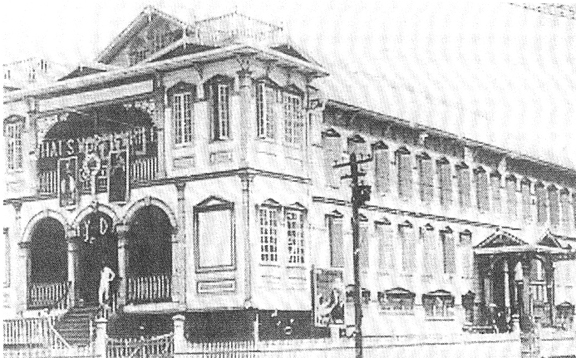Camp Street got its name from the fact that it linked Stabroek and Cummingsburg to the military garrison in Kingston at the beginning of the nineteenth century. It indeed became the ‘happy camping ground’ for citizens growing up in the capital city, playing such a major role in our maturation, that I hasten to record for posterity this nostalgia.
During World War II, a huge zeppelin traversed the city twice daily – passing directly overhead at Camp Street on its way from the US airbase at Atkinson Field to patrol off our foreshore for German U-boats. At Easter, the prime picnic spot to fly our kites, was the sandy hill with huge almond trees at the head of Camp Street, off the sea wall.
The street provided all the facilities and amenities for a full life in my Guyana El Dorado. From kindergarten at Mrs Hunter’s School, there was (and still is) public school education available at Christ Church and St Mary’s Schools. Queen’s College moved to Thomas Lands from Brickdam in 1951, and technical education was available at that time from the Technical Institute at Woolford Ave, to the south. Indeed, under the University of Guyana Ordinance, 1962, university level classes started at these two institutions as ‘Jagan’s night classes,’ prior to the opening of the University of Guyana.
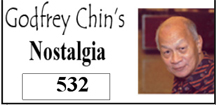
The East Indian Cricket Club founded 1913, and now the Everest Sports Club, is one of the best cricket facilities in the city today. The YMCA founded in British Guiana in 1882, has offered since then sports and social facilities for thousands of Guyana’s sons at Thomas Lands. Their annual May Fair on the first Saturday of May month, is a cultural entertainment milestone.
When Luckhoo pool opened in the early sixties, the YMCA swimming and coaching programmes were a major success in this land of many waters. Competitive swimming was also possible at the pool at Colgrain House, which hosted the popular International Bar – a massive fundraiser for the Red Cross in collaboration with the various consulates.
The Gaiety Cinema at Brickdam was destroyed by fire in 1926, while the London Cinema built in 1917 became the Plaza in 1951, until its roof crashed in 2008. When disco was popular in the seventies, the Library next to the Plaza was the place to fête, as was the Belvedere on the next block, with their five separate dance floors. Sandhills at Charlotte St was also a popular disco, while downstairs the first retail television sets were available, as TV came to Guyana in the early eighties.
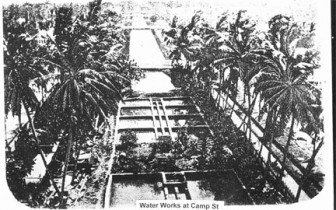
The Belvedere Hotel established in 1947, was one of our popular hotels, as was the Trio La Chalet Guest House, opened in 1965 in Hadfield Street. This site is today Keishar’s. The Montrose Hotel opposite the Belvedere was a favourite at an earlier stage.
Mrs Daniels’ ‘Nook’ at D’Urban Street, offered the best patties and pastry, while Singh’s opposite, supplied parched nuts, channa and candyfloss. Shanta’s (formerly Betty’s) at New Market Street, introduced Indian carry-away dishes to the locals for picnic baskets to motor racing, etc, and is still there. Ransome’s Parlour in Middle Street offered the best pine tarts, with DeCastro, obliquely opposite (previously De Groot’s) serving a delicious black pudding, souse, custard and crab back. Sue’s Mount Eagle at Regent Street had a champion mauby.
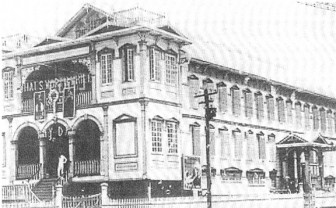
Freezer Fresh that replaced Searchlight Stores sold delicious ice cream /gourmet ices/sodas, etc, to match Brown Betty on Hincks Street. The corner spot is today a popular off-site betting shop.
Lachmansingh, Carfits, Burrowes and Bostwick Drug Stores were available on Camp Street to supply cascara, senna pods, castor oil and soft grease to counter the minor ills and ailments after ‘pigging out’ on all these local sweetmeats. After the Bookers Drug Retail Store in Regent Street was destroyed by fire in the forties, Kwang Hing’s moved to this site from Charlotte Street, to establish our first supermarket. A huge mall is being built there today.
Material for my first dungaree and dress long pants (Sudeena Gabardine) at $4.95 a yard was purchased in 1952 from a small Kissoon outlet south of Bernard’s Hardware on Robb Street. A H and L Kissoon became the mighty furniture giant at this corner later.
For exquisite dining there was the Orient in Middle St, plus Bamboo Gardens and Rainbow Terrace in Regent Street. The Yong Hing site was previously the New China Restaurant in 1945, and later became Kingsway.
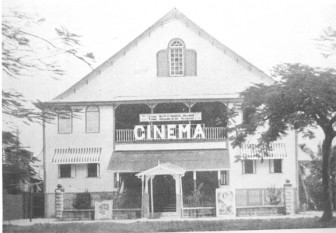
It was the C A Phillips offices after the February 1962 riot and Black Friday fires. The 747 Night Club on this site was destroyed by fire in the nineties, and is today the City Mall.
Harlequin Bakery which was started in 1926 at South Road by Morris Harlequin, was incorporated in 1936, and a large dry goods store and dress Shop was added to the north.
This site became the GNTC bookstore and today is Banks/DIH Campsite. Opposite there was Lall’s Bazaar with a Bata outlet next door.
The corner site is now the Demerara Bank. On Friday, March 7, 1913, Brickdam Cathedral was destroyed by fire. Other major fires on Camp Street included Congress Place on October 23, 1973, and the Ministry of National Development on July 11, 1979. On April 9, 2001, a major conflagration wiped out A H & L Kissoon at Robb Street plus 16 other businesses to Regent Street on the western side. This site is now Republic Bank.
The terminal of the Lama Water Conservancy ended at Camp Street, familiarly known as the Water Works.
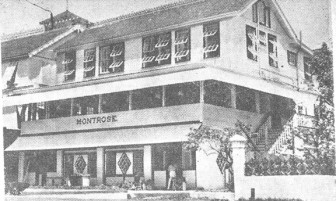
This canal was later filled in to become the Merriman Mall, and later the Indian Monument Garden was built at Camp Street.
The Georgetown Club (established in 1858) was housed in the Assembly Rooms, but was destroyed in the 1945 Black Friday fire and then moved to the Camp Street premises.
Today their 3 squash courts facilitate Guyana’s prominence in this game in the international field.
David de Caires initiated in 2000 the Camp Street Avenue Maintenance Programme, and this is one of our best maintained streets – perpetuated by the present committee of Louis Naraine, Johnny Carpenter, and Albert Rodrigues.
And for those who are fed up with the present garbage around the city, a vacation abroad may alleviate your stress, but you may have to line up at the Passport Office at Camp from 4am.
For more Nostalgias refer to Godfrey’s Nostalgias – Golden Memories of Guyana 1940 to 1980 or Godfrey Chin at Google or Yahoo.com
